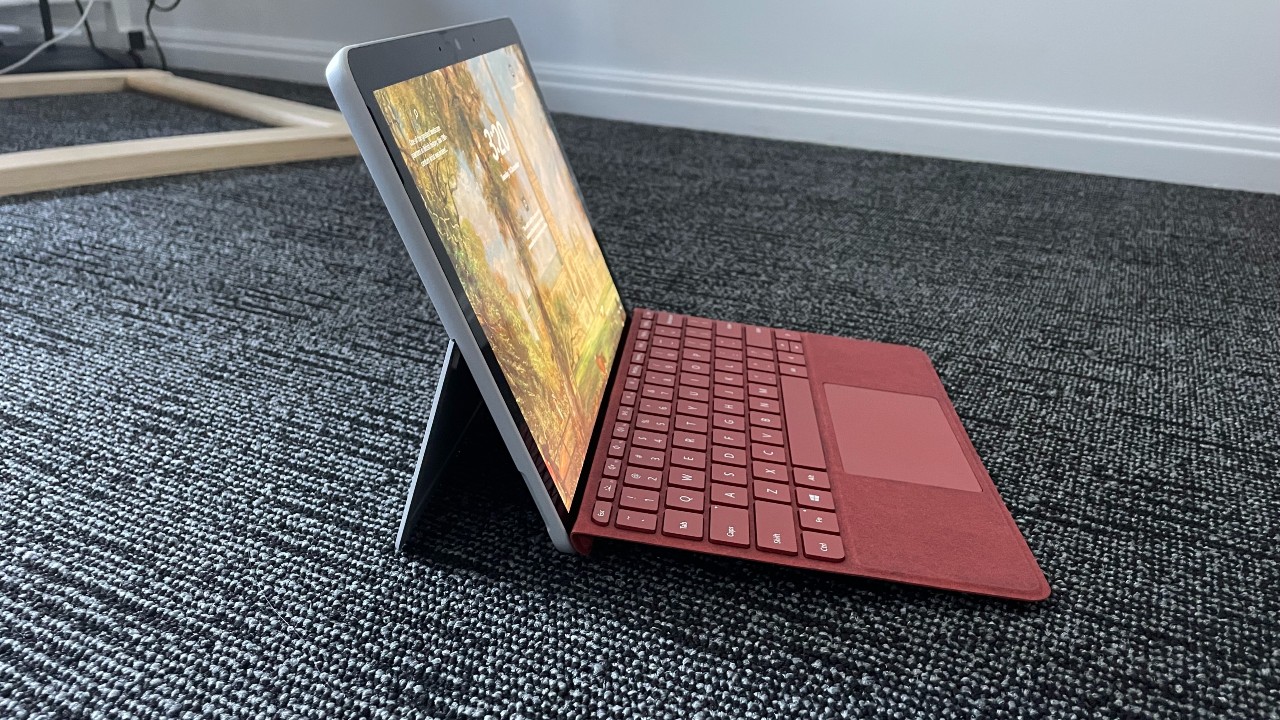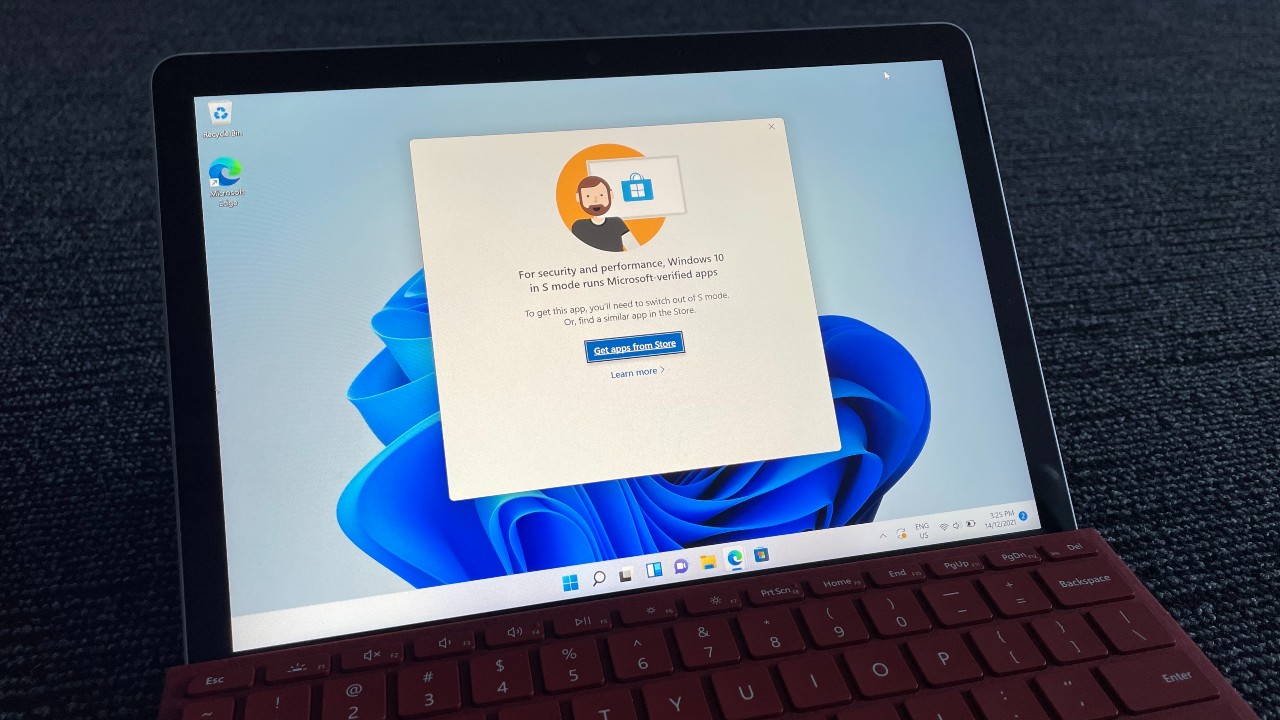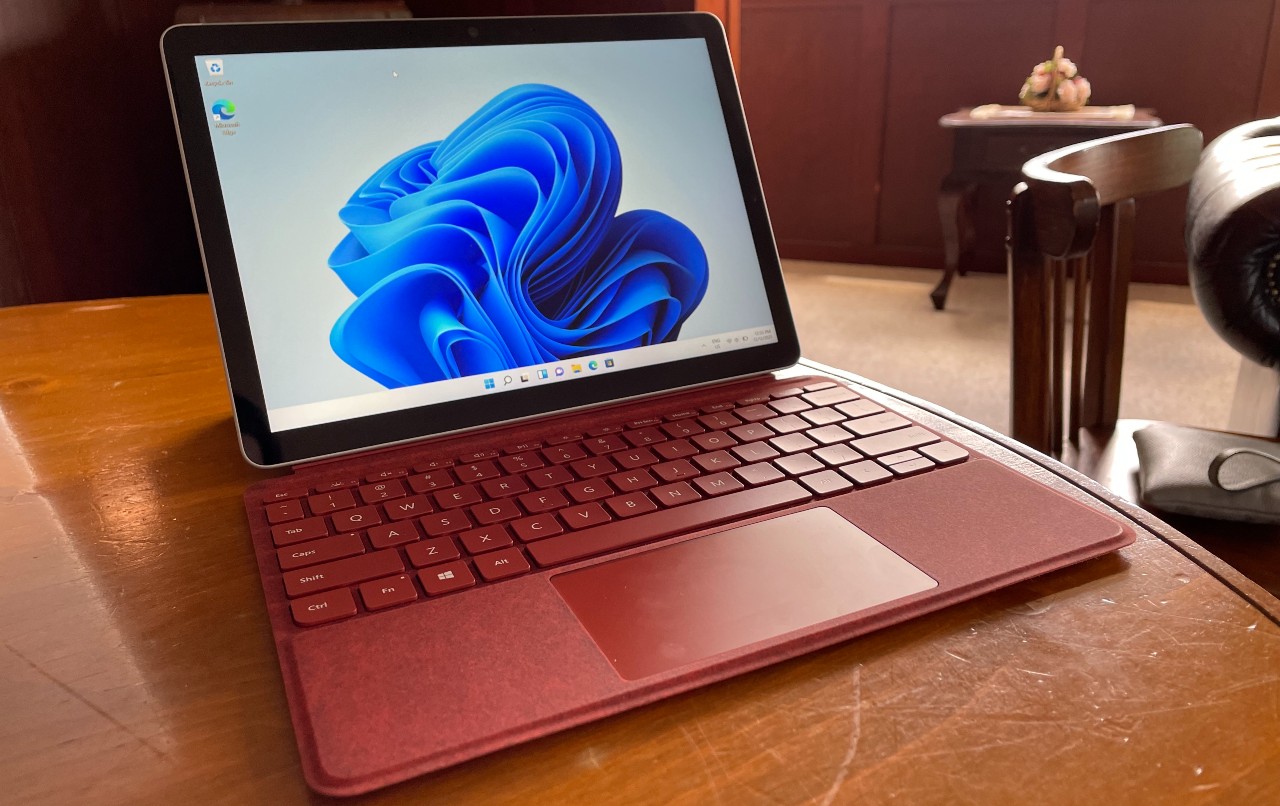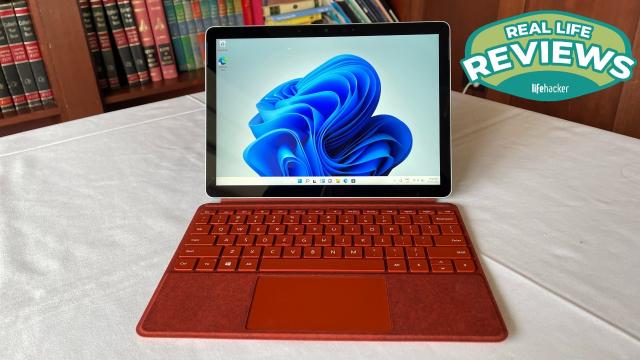As more of us transition to a hybrid office and work-from-home life, it’s more important than ever to have a computer that can do it all. Microsoft’s new Surface Go 3 can’t really nail that balance, but it is perfect for those wanting a laptop they can use on the go.
What the Surface Go 3 lacks in processing power it makes up for in portability and convenience. It’s actually more akin to a tablet than a full-blown laptop, but it has 2-in-1 capabilities (that you’ll have to pay for). It’s also one of the more affordable laptops from Microsoft that features the new Windows 11 OS.
The Surface Go 3 presented its fair share of problems during my testing period, but it has a few redeeming qualities that might make it the perfect tablet for you.
Microsoft Surface Go 3 Review
Before we get into things, here are the major specs you need to know about.
- Display: 10.5-inch PixelSense display
- Resolution: 1920 x 1280
- Processors: Quad-core 10th Gen Intel Core i3
- Graphics: Intel UHD Graphics 615
- Memory: 4GB/8GB
- OS: Windows 11
- Storage: 64Gb eMMC or 128GB SSD
- Battery: Up to 11 hours
- Ports: 1 x USB C, 3.5 mm headphone jack, Surface Connect point, Micro SDXC card reader
Find a full list of specs for the Surface Go 3 on Microsoft’s website.
What’s good?

Portability and Design
The Microsoft Surface Go 3 is a nice little computer. It’s slim, light and super portable. I found it easy to slip into a packed bag but was even happier with how easy it was to hold in tablet mode.
I found myself using it in tablet mode without the keyboard attached if I was reading, watching or jotting down notes. When it came to writing tasks, it was easy to prop up the Surface Go 3 on its kickstand, snap on the keyboard and get going.
As I write this review I’m using the Surface Go 3 in laptop mode and it’s hooked up to my external monitor for a dual display. It makes for a nice transition between working from home and on the go life, which is one of the huge benefits of this design.
Despite being quite a small device, the screen is bright and vibrant and I really like that the touchscreen is available as an option, too. This makes watching videos, reading or more creative tasks like drawing a breeze on the Surface Go 3.
The small size of the screen, and by default the attachable keyboard, also didn’t impact the comfortability of typing, but I imagine it might be different for those with larger hands.

Webcam
The webcam on the Surface Go 3 surprised me. The front-facing camera is a 5.0 MP with 1080p HD video while the rear-facing camera is 8.0MP with auto-focus and 1080 HD video.
I didn’t think this would make such a huge difference until I tried it. The 720p webcam of my MacBook just can’t compete with the clarity and smoothness of 1080p HD and it’s a huge advantage for those on video calls all the time.
Having a rear camera is also useful and if you want to take pictures straight to your Surface Go 3, they come out quite nicely.
Price
Starting at $629 the Surface Go 3 is by far the most affordable laptop in the Microsoft Surface range. It also comes packaged with the latest Windows 11 software so if you’re keen to try out the new OS on a budget, this Surface Go 3 allows you to do that.
Even for an Apple iPad Air, you’re looking at around $800. The Surface Go 3 is able to undercut that rate and still exist as a computer in the Surface line-up – it’s a pretty good deal.
However, the price begins to rise when you add in the cost of accessories, particularly the Surface keyboard which is a must if you want the full benefits of the 2-in-1 device. It’s definitely worth factoring in the price of the keyboard when making your decision.
What’s not so good?

Better at the basics
While the Surface Go 3 makes for a nifty portable computer, it’s best at doing only basic tasks.
The processing power has improved between Surface Go generations, but it’s still not enough if you plan on using it heavily for things like video editing or Photoshop. I found it could easily handle my day-to-day tasks like answering emails, taking notes or watching videos, but it still had its share of glitches.
For instance, the Go 3 would often take seconds to respond to simple requests like opening a Microsoft Edge tab. Sometimes it wouldn’t respond at all. Glitches like this are expected but not from a brand new out-of-the-box laptop.
We also need to discuss Windows 11. I’ve been in the Apple ecosystem for a while now so I’m not too clear on the major upgrades that this operating system brings.
For the most part, I found Windows 11 clean, smooth and easy to use. I had a few initial complaints though, like why the hell is the taskbar pinned to the centre of the screen? But this can be changed in settings.
I think it’s more the fact that the default settings and systems of Windows 11 make little sense and are one more thing you have to change. This is made especially clear by the system’s ‘S-Mode’ which is essentially Microsoft’s way of boosting performance on the Surface Go 3 by keeping everything in the Microsoft ecosystem. Honestly, stop trying to make Edge happen.
S-Mode can be turned off but it just feels like an over the top thing for Microsoft to do in an effort to box you into its ecosystem. It also means you have to spend more time than should be necessary in the settings menu of the Surface Go 3 just to get it to work normally.
Battery
Microsoft claims 11 hours of battery life for the Surface Go 3, which is pretty good for a day of work.
This isn’t quite what the laptop achieved in reality. I found that doing simple tasks like browsing or watching videos could get me close to ten hours of battery. But using the Surface Go 3 for more involved tasks like running multiple tabs, downloading, or connecting to my external display put a serious drain on the battery, to the point I was only getting half that.
I think the Surface 3’s battery life would probably suffice for things like off-site meetings or going between classes at university, but for any intense periods of work, you don’t want to forget that charger.
Design downsides
While I’m quite a fan of the Microsoft Surface design and the portability of the Go 3 in particular, it has a couple of downsides.
For starters, while the Surface Go 3 has many usable options, it’s not comfortable to type on while having the device in your lap. The combination of the kickstand and a keyboard that simply isn’t sturdy enough makes it nigh impossible to type while chilling on the couch.
There’s also the matter of ports. The Surface Go 3 only has an SD card reader – which is great – and only one USB-C port – not so great. You’ll need a dock or adapter if you want to use your Surface Go 3 as an extra display or connect it to an HDMI device.
The charger doesn’t use USB-C which is fine, because you don’t have to compete for ports, but wouldn’t it be nice if we could all just switch to USB-C charging once and for all?
Surface Go 3: The verdict

In the end, it all comes down to how you want to use this device.
The Surface Go 3 is best at basic everyday tasks which are helped by its versatility between tablet and desktop modes. But it’s held back by its lack of processing power and variable battery life.
Yes, this is an affordable option for those wanting a tablet that acts more like a laptop and can run Windows 11, but it won’t suit those hoping to get heavy use out of it. The device is probably a better option for those who are often on the move, like students or travellers, and at just over $600 you won’t have to break the bank to get it.
On the whole, the Surface Go 3 is a nice 2-in-1 device that is easy to use, but it’s nothing special.

Leave a Reply
You must be logged in to post a comment.